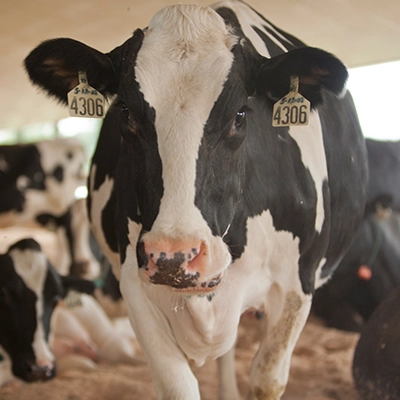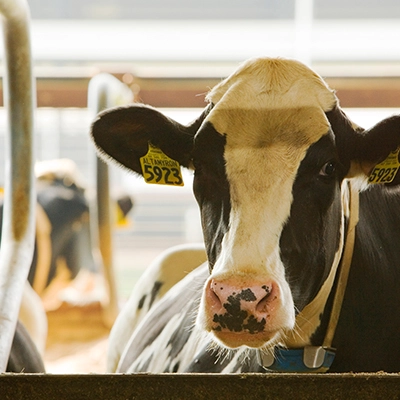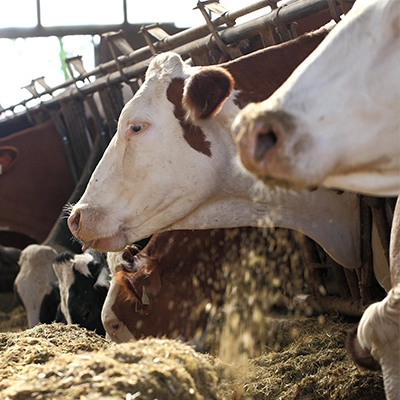What is Cud & Why Do Cows Chew Their Cud?
Did you ever stop to wonder what is cud and why do cows chew it?
According to dairy cow nutritionist Mary Beth de Ondarza, when a cow is chewing her cud, that’s a good sign. It means that she is comfortable, relaxed and eating a good diet with a sufficient amount of long fiber.
What is a Cow's Cud & How Do Cows Chew Their Cud
It all goes back to the fact that dairy cows are ruminants, meaning that part of their stomach, the rumen, is like a large fermentation vat. It contains bacteria that digest the cow’s feed and convert it into energy and protein.
Here’s how it works: While fibrous feed like hay is good for cows, they have to break it down quite a bit so the rumen bacteria can digest it. When the cow first eats her feed she chews it just enough to moisten and swallow it. Then the bacteria in the first section of her stomach, the rumen, get to work softening the feed and fiber. This softened food is called the cud, and it is sent back up to the cow’s mouth, where it is re-chewed before going back down into her stomach to be fully digested. Chewing cud produces saliva which is important for controlling rumen acidity. Too much acid hinders the growth and function of the rumen bacteria, especially those that digest fiber.
Cows need to be comfortable and relaxed to chew their cud, and usually lie down to do it. They can lie down for very long periods of time, not to sleep, but just to chew their cud.
Health Benefits Of Chewing Cud
Cud-chewing cows are generally healthier. With a well-functioning rumen, cows will digest more of their diet and produce more milk. That’s why farmers pay close attention to whether or not their cows chew their cud, and some have even installed monitors to help them keep an eye on the herd’s cud-chewing activity.















